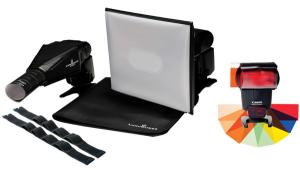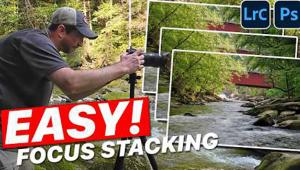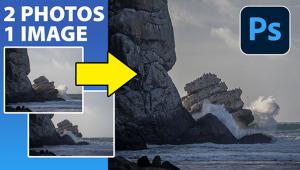Digital Innovations
Resolution Is In The Eye Of The Beholder
| I have a confession to make: In all of the 50 plus years that I've been making images, I've never photographed a resolution chart. I have always judged a lens or camera's performance by how much I liked using it and how good the photographs looked. I never set up a camera on a 100 lb tripod, weighted down by sandbags to photograph a chart taped to the wall (or even a newspaper page) and processed the resulting fine grain film in a high accuatance developer diluted 16:1 with distilled water along with a few eyes of newt tossed in to accelerate development. All I care about is how much fun I had making the images, and if they didn't look great this time, I'll try to do better the next. Because of the many differences in how digital imagers work, I always thought that most pixographers felt the same way until a reader's letter changed my mind. It's too long to go into the full text, but here are a few excerpts along with my comments. It all began at a recent computer show, where the reader saw something that caught his attention: "There was this very worried and obsessed young lady who brought an 80MB file with her to test the Epson Stylus Photo 1200 printer at 1440dpi and 720dpi on an 8x10 print. She wanted to be absolutely positively sure there was a difference that could be visualized. She brought five different loupes. I couldn't see any [difference] neither could the pro. What is all this over preoccupation with perfection that can't be visualized and more importantly the cost." Stuff costs what it costs, whether you're purchasing high quality fiber-based paper and chemicals for the darkroom or ink jet ink and paper. I think that the ink jet materials we use today are a pretty good deal. The media and ink for a letter-sized print made on Epson's new Stylus Photo 2000P printer cost between $1.40 and $1.89 depending on the paper stock used and this is for materials that will last more than 100 years. At one point the reader asks "shouldn't we be given something like a chart that lists the approximate amount of ink needed to produce, for example, 8x10s at 240dpi with a 16MB file printed at 720dpi?" The truth is that until some organization comes up with a standard (and I don't think that's ever going to happen), any comparison will be difficult, if not impossible to make. Ink use is always going to vary based on the subject matter that's printed. A landscape photographer uses different colors and quantities of ink than a portrait photographer, and once any of the colors is drained, the cartridge must be replaced. Large graphic arts ink jet printers, such as the Epson Stylus Pro 5000 have separate cartridges for each color, so replacement is a different issue for them and some printers, from companies such as Hewlett-Packard, are trying to bring this functionality to the desktop, but this feature is far from universal. I do think that the reader's comments about being able to see digital image quality makes a good point that is often overlooked. The reader went on to say that "most of us are preached by the digital gods that the numbers 300dpi scanning resolution and 1440dpi print quality is paramount." Several times in these pages, I've stated that you should try to match the image quality of the digital capture with that of the output, and received more than a few critical letters and e-mails stating, "I don't know what I'm talking about." While testing a Nikon CoolPix 990 recently I was able to make 11x14" prints on an Epson Stylus Photo 1270 from the 1024x768 files that the camera produces in Normal (not high resolution) mode. This is a 5.9MB image that measures 7x9" at 216dpi. Not only was I impressed with the results when printed at the 720dpi setting, but when I showed the prints to a number of people, they were, too. Let me share some advice that I used to give students when I taught at Howard Community College in Columbia, Maryland: Don't listen to anybody--even me--about how your images look. The only person your photography, and that includes digital images, should please is yourself. If you're happy, that's all that matters. New Kodak Printer. They just announced their new 4720 Photo Printer. It is a portable, small-format thermal dye printer that produces photographic quality prints in 4x6 or 4x7 borderless sizes for passports, IDs, business cards, as well as portrait applications. It should also be perfect for portrait photographers who have to deliver a yearbook glossy on a tight deadline. Kodak expects the printer's life to exceed 20,000 prints and offers traditional media along with photo stickers for special event applications. It is bundled with Adobe Photoshop LE and sports a bi-directional parallel port that's designed to work with computers running Microsoft Windows 95/98 and NT. The 4720 Photo Printer has a suggested list price of $2195 and is available through authorized Kodak Professional Products dealers. For more information, visit Kodak's web site at: www.kodak.com/go/professional. JPEG Me! As part of a campaign to encourage adoption of the wavelet-based image compression that's part of the JPEG2000 standard, LuraTech, Inc. has released its free LuraWave Smart-Compress Lite software. LuraWave uses compression technology that's similar to the proposed standard, allowing digital imagers to test the compression and other features behind JPEG2000. The software uses wavelet technology that compresses digital images at extremely high rates into files using the LuraWave Format (LWF), which is a proprietary format offering higher quality and smaller file sizes than the current JPEG standard, making it easier to transfer image files across the Internet. This is a scalable, multi-resolution image format that offers a number of features and flexibility over current standards, including the ability to perform lossless or lossy compression within the same mode. LuraWave's multi-resolution format (a la the late, lamented FlashPix) allows images to be scaled at different sizes without having to create separate files. On the web, a user progressively downloads sharper versions of an image. Initially, a low-resolution version appears then more resolution and details are filled in as the data stream continues. The format's flexibility is also valuable for handheld devices which have different imaging requirements than standard web pages and need ways to draw only small amounts of data from the original image. LuraWave SmartCompress Lite can be downloaded from www.luratech.com and the professional version can be purchased from the site for $19. New Polaroid Scanner Software. With the introduction of the SprintScan 45 Ultra film scanner, Polaroid announced a new version of its PolaColor Insight Pro software. It's based on customer feedback on scanning slides and negative film, including the Advanced Photo System. One of the improvements includes availability as an Adobe Photoshop compatible plug-in. Pola-Color Insight Pro 4.5 software is also TWAIN compatible, allowing it to be used with any application that accepts TWAIN-compliant devices and is compatible with Microsoft's Windows 2000 operating system. The software lets you create preview thumbnails for four, six, or 40 images with Polaroid's 35mm and APS film holders. Users can set a batch scan that will scan all of the images in a film holder or any selection of images in a batch without having to sit next to the scanner making sure it gets the work done. Several new film profiles have been added, including Kodak Portra NC, Kodak Portra VC, Kodak Ektapress 800, Fuji Press 800, and Fuji Superia 200. There's lots more here including better color management features. If you're using a Polaroid film scanner and have an older version of PolaColor Insight Pro, you can download the new software from www.polaroid.com/service/software/sprintscan/ss4000win.html for Windows and www.polaroid.com/service/software/sprintscan/ss4000mac.html for Macintosh. Plug-In Of The Month. I've found that one of the best ways to prepare photographs for the web is to use Ulead's SmartSaver Pro. They recently introduced Version 3.0 of this wonderfully practical plug-in. Functioning as a Photoshop plug-in or stand-alone application, SmartSaver Pro 3.0 includes new features that make it easier to get images and animations ready for the web. The main components are tools for image optimization, slicing, image map creation, JavaScript rollovers, and table-based graphics creation. The new batch optimization features also let Webmasters optimize images from HTML (HyperText Markup Language). Users only have to type in a URL or specify a web page's location on the local drive and SmartSaver will find all the images on that page and batch compress the specified files to the chosen format and settings. It will also auto detect the original file format and re-optimize to the same format, then automatically save to the appropriate folder. Users can set JPEG (Joint Photographic Experts Group) image quality as well as color quality for better compression, while the lossy GIF (Graphic Interchange Format) feature allows for smaller GIF files. You can also specify the amount of dithering for GIF and PNG (Portable Network Graphics) formats as well as snap colors to a web palette, lock palettes, and specify GIF and JPEG transparencies. Expanded file formats allows users to import native Photoshop files while retaining layers to create an animated GIF file. Tab-based interface and customizable presets speed up the web production process. New preview options allow Internet Explorer and Netscape previews, along with previews of simulated displays on Apple Macintosh systems. Ulead SmartSaver Pro 3.0 costs $59.95 and owners of Version 2.0 may upgrade for $34.95. For more information on Smart-Saver Pro and other Ulead products, visit their sites at: www.ulead.com or www.webutilities.com. Put It In Your Wallet! One of the big disadvantages of digital images is that unless you make prints or carry a digicam around with you, there's no convenient way to show all of your coworkers the cute picture of your kid digging up the back yard. Now you can stick your camera's memory card into a VideoChip Technologies Wallet and show off all of your digital photographs--without using a camera. The Wallet is a compact, portable LCD digital photo album that displays images from CompactFlash or SmartMedia cards on a LCD display. Measuring approximately 4x5" and about 3/4" thick, the Wallet easily fits into your pocket or purse. Multiple images can be displayed on the screen as thumbnails to help you find a specific picture. Buttons let you scroll through the images to choose a particular one, before displaying it in full on the 4" diagonal screen in landscape or portrait view. The Wallet has two slide-show modes where the stored images are automatically selected and displayed at a timed interval. The Wallet has a 24-bit color LCD screen with 320x240 resolution and is backlit for enhanced color and image depth. It can also be used with the (included) stand to act like a virtual picture frame. It will run for hours on two standard DL123A 3v camera batteries or on an AC adapter. At $349.99, the Wallet is not inexpensive, but clearly fulfills a need in the marketplace. More information is available at: www.videochip.com.New Low Cost HP Printer. Hewlett-Packard announced a new, inexpensive ink jet printer for students, families, and first-time buyers. Priced at $119, the DeskJet 640/648C fits into the sub-$150 category which comprises 80 percent of the home computing market. The printers--the only difference is the software bundle--use the drop-on-demand thermal ink jet methods and can print at speeds up to 6 ppm (pages per minute) for black text and 3 ppm for color. The DeskJet 640/648C uses a four-color dual cartridge system but has an optional HP Photo Cartridge for photo-realistic output, especially when used with the company's Premium Paper. Paper handling capabilities allow you to use up to 36 lb stock, envelopes up to 24 lb, and card stock up to a maximum of 110 lbs. The printers have parallel and USB ports allowing them to be connected to Windows or Mac OS based computers. Information about HP products can be found at: www.hp.com. Pack Your Digicam Bag. Mizco International, Inc., manufacturer of DigiPower Solutions, announced their new Universal Starter Kit for digital cameras. It consists of a case, four NiMH AA batteries and quick charger, mini travel tripod, and lens/LCD cleaning cloth. The batteries have no memory effect, are environmentally friendly, and can be recharged up to 1000 times. The DigiPower systems bag has a shoulder strap with fanny pack option and is available in two fashionable colors: black with burgundy trim or blue with green trim. Made from High Density Crinkle Nylon, the bag is durable and water repellent. The washable 10" square dual-sided lens cleaning cloth has a smooth surface for hard plastic and glass lenses, and a soft surface for more delicate LCD screens. The mini tripod folds flat (only 6"), making it ideal for travel. The DigiPower Universal Starter Kit has a suggested retail price of $79.95. More information can be found on their web site at: www.mizco.com. Microdrives Go One Gig. The IBM Microdrive is a truly amazing device. With a form factor identical to Type II CompactFlash cards, you can store lots of images on the 170 and 340MB models that have been available up to this time. With CF cards from companies such as Delkin hitting 256MB, IBM raised the ante with new, stronger drives in capacities from 340MB to 1GB. The new drives incorporate IBM technologies such as Giant MagnetoResistive (GMR) head technology, load/unload features, Enhanced Adaptive Battery Life Extender 3.0, and TrueTrack servo for maximum capacity, performance, and reliability. With a maximum sustained data rate of more than 4MB/sec, the IBM Microdrive provides a significant performance improvement over current flash memory cards. As a result, large files can be transferred quickly, and users can be more productive. Weighing only 16 grams, the IBM Microdrive provides outstanding image storage capacity in a compact, portable package, but should also find a place (when used with an adapter) in the many laptop computers that accept Type II PC Cards. By using a Microdrive you can take a big chunk of your desktop data with you on a trip and store it in a device that will fit in a shirt pocket or purse. For more information, visit www.storage.ibm.com/hardsoft/diskdrdl/micro on the Internet. |

















































